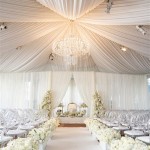How To Decorate a Small Living and Dining Room
Combining a living and dining room in a limited space presents unique design challenges. Successfully integrating these two distinct functional areas requires careful planning and execution. This article provides a comprehensive guide to maximizing space and style in a small combined living and dining room.
Space Planning and Defining Zones: Begin by carefully assessing the available space. Accurate measurements of the room's dimensions are crucial for furniture selection and placement. While the space is combined, it's essential to define distinct zones for living and dining. This can be achieved through strategic furniture placement, area rugs, and varied lighting schemes. For example, positioning the sofa with its back to the dining area creates a subtle visual separation.
Furniture Selection and Placement: Choosing the right furniture is paramount in a small combined space. Opt for multi-functional pieces, such as ottomans with storage, or extendable dining tables. Avoid bulky furniture that can overwhelm the room. Scale is critical; select furniture proportionate to the room's size. Consider using furniture placement to delineate the two zones. For instance, a strategically placed console table behind the sofa can serve as a room divider and provide extra storage.
Color Palette and Wall Treatments: A light and airy color palette can visually expand the space. Neutral colors, such as white, beige, or light gray, create a sense of openness. Consider using an accent wall to add a pop of color or texture without making the room feel smaller. Mirrors are excellent tools for reflecting light and creating an illusion of depth. A large mirror placed strategically can significantly enhance the perception of space.
Lighting Strategies for Combined Spaces: Lighting plays a vital role in defining zones and creating ambiance. Utilize layered lighting, incorporating ambient, task, and accent lighting. Ambient lighting provides overall illumination, while task lighting focuses on specific areas, such as the dining table or a reading nook. Accent lighting highlights artwork or architectural features. Consider using dimmer switches to adjust the lighting levels and create different moods.
Textiles and Accessories: Carefully chosen textiles and accessories can enhance the aesthetic appeal of the space without cluttering it. Opt for lightweight fabrics for curtains and drapes that allow natural light to filter through. Cushions and throws add comfort and style to the living area. Decorative items should be used sparingly to avoid a cluttered look. A few well-chosen pieces, such as a statement vase or a piece of artwork, can add personality to the room.
Maximizing Vertical Space: In small rooms, utilizing vertical space is essential. Install shelves or wall-mounted cabinets to provide additional storage and display space. Consider hanging artwork higher on the walls to draw the eye upwards and create the illusion of height. Tall, slender bookshelves can also contribute to this effect.
Choosing the Right Dining Table: The dining table is a focal point in the combined space. For small rooms, consider a round or oval table, which takes up less visual space than a rectangular table. A drop-leaf table or an extendable table offers flexibility for accommodating guests. Transparent materials, such as glass or acrylic, can make the dining area feel less visually heavy.
Creating an Illusion of Space with Rugs: Area rugs can define zones and add warmth to the space. Choose rugs that are appropriately sized for each zone. A rug that is too small can make the room feel disjointed, while a rug that is too large can overwhelm the space. Light-colored rugs can enhance the sense of openness.
Storage Solutions for Small Spaces: Incorporate clever storage solutions to keep the combined space organized and clutter-free. Utilize under-sofa storage, ottomans with hidden compartments, and wall-mounted shelves. Consider using baskets and decorative boxes to store items and add visual interest. Keeping the space tidy and free of clutter is crucial for maximizing the sense of spaciousness.
Window Treatments for Natural Light: Maximize natural light to create a brighter and more spacious feel. Choose sheer curtains or blinds that allow light to filter through while maintaining privacy. Avoid heavy drapes that can block natural light and make the room feel smaller. Consider using Roman shades or bamboo blinds for a sleek and modern look.
Maintaining a Cohesive Design: Ensure a cohesive design throughout the combined space by using a consistent color palette and style. This will create a sense of harmony and flow between the living and dining areas. While each zone should have its distinct function, the overall design should feel unified and well-integrated.

Стулья стол Living Room Dining Combo Small Rooms Condo

Living Room And Dining Design Ideas Designcafe

Living Room Decorating Ideas How To Decorate A Small

Living Room Dining Combo Ideas With Tricks Doğtaş

Living Room And Dining Design Ideas Designcafe

Living Room Dining Combination Ideas Small Decor Scandinavian Designs

30 Living Room Dining Combo Ideas 2025 One For All Rectangle Rectangular Rooms

Living Room Dining Combo Ideas With Tricks Doğtaş

Small Living Dining Room Combo Ideas Transformer Table

15 Best Small Living Room Ideas How To Decorate A
Related Posts







